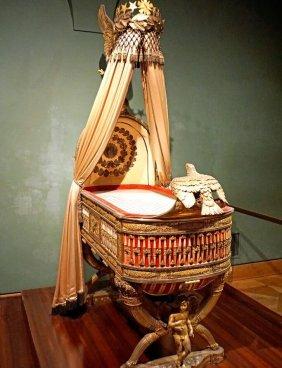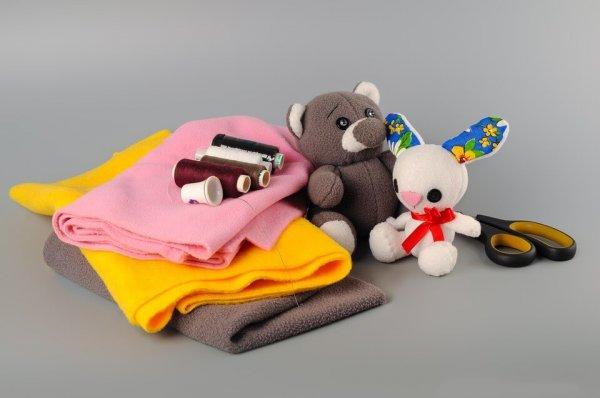Canopy on a crib: we sew ourselves
For centuries, parents have protected their sleeping babies from the cold, insects and the evil eye with canopies over the cradle. Now this thin bedspread is not an essential item and rather serves as a decorative function. Nevertheless, a canopy for a crib can decorate a child's room and make his sleep calm and comfortable. Let's consider the most interesting models of canopies and try to make them with our own hands.
A canopy over the bed is most often used for newborns. It not only creates a cozy nest for the baby, but also protects it from dust, pet hair, drafts and mosquito bites. For older kids, such a canopy helps to form the daily routine, and for hyperactive children and adolescents, it helps to hide from the outside world and calm down.
According to the size of the curtains, products are:
- short - used exclusively for beauty;
- medium - the most popular and practical;
- long - very effective, but uncomfortable.
There are three main types of attachment of awnings over a berth:
- removable universal holder in the form of a long stick with a ring or loop that attaches to the back or head of the bed;
- a holder mounted to the wall at the head of the bed, which allows you to hide only the upper part of the bed under the canopy;
- frame around the entire perimeter of the bed for fixing the so-called "royal" canopy.
Most often, you can find holders of the first type on sale, usually they come with ready-made products or baby bedding. This is the most successful option for attaching a canopy for newborns.
As a rule, fabrics of white or light pastel colors are used as the material for the canopy. Thick curtains are usually used to protect from bright sunlight and drafts, transparent - from dust and insects. It must be remembered that the canopy over the bed should not interfere with free air circulation and accumulate static electricity, therefore, synthetic fabrics should be avoided, giving preference to natural materials: cotton, linen, satin, airy tulle.

A canopy for a crib can be decorated with inserts made of bright material, artificial flowers, light and airy paper and felt mobiles. Products that are now popular in retro style are richly embroidered with lace, beads, ruffles and fluffy frills.
A canopy for a boy can be designed in the form of a knight's tent or an Indian wigwam, using appliqués on the appropriate theme, felt flags and natural materials. For girls, as always, delicate lace, garlands of large beads, silk ribbons are relevant.
A very interesting and practical decor option is the use of an LED garland, which plays the role of not only an original accent in the interior of the bedroom, but also a night lamp with a dim dim light that will not interfere with the baby. It is not difficult to fix such a garland: just throw it over the canopy holder and tie it in the center or fix it in several places with decorative clothespins. When using such electric light sources, one should not forget about the observance of safety measures.
Sewing a canopy with your own hands

Despite the huge selection of various curtains in children's stores, many mothers prefer to sew them with their own hands. The manufacturing process of the product is quite simple, but it requires a certain degree of care and attention.
To sew a classic canopy for a crib, you will need the following materials:
- 2.5-3 m of natural translucent fabric, about 1.5 m wide;
- a ribbon of bright colored material, approximately 1 m long and 20-25 cm wide;
- white or colored satin ribbon for edging;
- lace or additional accessories at will.
Operating procedure:
- Cut the rectangle of the base fabric in half and fold it right side in. Using a ready-made pattern or pattern, slightly round and cut the lower edges of the future product.
- Using the sewing machine, sew the middle seam, leaving about 25-30 cm open at the top of the canopy.
- Finish the edges of the parts with satin ribbon for edging.
- At the top of the workpiece, using a pencil and a ruler, draw two parallel lines, one of which should recede from the edge of the part by about 5 cm, the other by 20 cm.
- Manually or using a sewing machine, carefully assemble the upper part of the future canopy so that its length is 1 meter.
- Cut a blank of colored fabric in half by analogy with the main fabric, cut the sections on one side. To make the tape easier to sew to the canopy, its edges should be ironed in advance, forming a hem.
- Baste and stitch on colored tape along the marked marking lines.
- Treat the top of the garment with a satin ribbon. Decorate the canopy to your liking.
To hang this model on the holder, you need to pass its ring into the drawstring - the gap between the colored tape and the main fabric of the canopy. If you plan to use fasteners with a one-piece ring, such a drawstring is not required. It must be replaced with strings of fabric or braid.
The order of fixing the product

A ready-made or self-sewn canopy on a crib can be fixed in various ways. The easiest way is to use a ready-made holder, which, depending on the model, can be attached to the walls of the bed using a clamp or screws.
A simple holder is easy to make yourself. A small wooden hoop, a piece of plastic or a piece of thick wire can play the function of a ring or loop that is passed through the canopy drawstring. They can be fixed above the berth using a sanded stick of the required length and a couple of screws. Another option for attaching a canopy made of fabric can be a bracket in the shape of the letter "L". In this case, the curtain is simply thrown over its upper crossbar and fixed with strings or decorative clothespins.
You can fix the canopy frame in different positions:
- if the bed is located along the wall, it is most rational to mount the holder in the center of one of its long sides;
- if the bed is perpendicular to the wall, the holder is attached to the center of its short side - at the headboard.
The curtain fasteners can be mounted directly to the wall or even the ceiling, but these options are more suitable for older children who sleep in standard "adult" beds.
